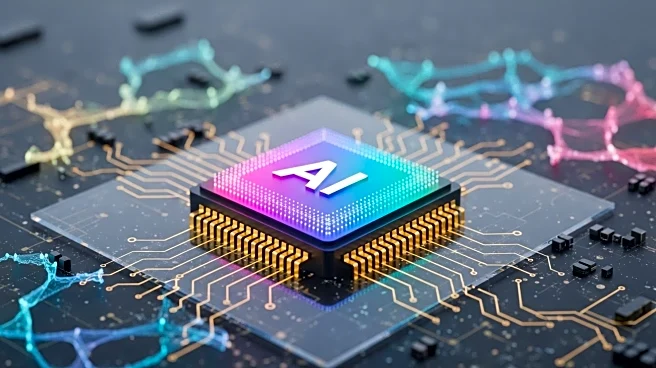What is the story about?
What's Happening?
AI image generators are becoming increasingly popular, but users often face challenges in achieving desired results due to poorly constructed prompts. The key to success lies in 'prompt engineering,' which involves crafting detailed and specific descriptions to guide the AI in generating images. Essential elements of a good prompt include specifying characters, settings, dimensions, style, and color palette. Users are advised to avoid exclusionary characteristics in prompts, as AI may misinterpret them. Post-generation editing tools are available in services like Adobe Firefly, Leonardo, and Midjourney to refine images further.
Why It's Important?
The rise of AI image generators has significant implications for creative industries, offering new tools for artists, designers, and marketers. By mastering prompt engineering, users can leverage AI to produce high-quality visuals efficiently, potentially reducing costs and time associated with traditional design processes. However, reliance on AI-generated images may lead to generic outputs, underscoring the importance of human creativity in maintaining unique branding and artistic expression. As AI technology advances, understanding its capabilities and limitations becomes crucial for maximizing its benefits.
What's Next?
As AI image generation technology continues to evolve, users can expect improvements in the accuracy and quality of generated images. Developers may introduce more sophisticated algorithms and user-friendly interfaces to enhance prompt engineering capabilities. The integration of AI tools in creative workflows is likely to increase, prompting discussions on ethical considerations and the role of human creativity in the digital age. Stakeholders in the creative industry may explore collaborations with AI developers to tailor tools to specific needs, ensuring a balance between automation and artistic integrity.
Beyond the Headlines
The growing use of AI in image generation raises questions about intellectual property rights and the originality of AI-created content. As AI tools become more prevalent, legal frameworks may need to adapt to address ownership and copyright issues. Additionally, the cultural impact of AI-generated art could influence aesthetic trends and consumer preferences, potentially reshaping the landscape of visual media. The dialogue between technology and creativity will continue to evolve, highlighting the need for ongoing education and adaptation in the creative sector.
AI Generated Content
Do you find this article useful?
















